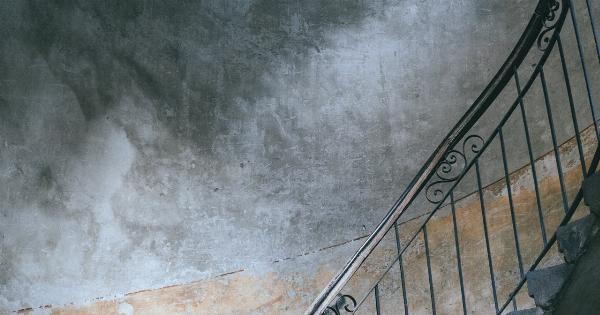It’s a familiar scene in households across the world – parents diligently cleaning their children’s ears with cotton swabs.
It seems harmless enough, but could there be hidden dangers lurking behind this common practice? In this article, we will explore the perilous consequences of cotton swabs for children and shed light on why it’s time to rethink our ear-cleaning methods.
The Importance of Clean Ears
Before delving into the risks associated with cotton swabs, let’s first understand why clean ears are essential for our children’s well-being.
Our ears produce earwax, technically known as cerumen, which plays a vital role in protecting the delicate structures of the ear. It helps to moisturize the ear canal, trap dust and foreign particles, and ward off infections. However, when excess earwax builds up, it can lead to discomfort, impaired hearing, and even infections.
Hence, keeping our children’s ears clean is crucial for their overall ear health.
The Temptation of Cotton Swabs
Cotton swabs, also known as cotton buds or Q-tips, have become synonymous with ear cleaning in many households. Their slender shape and soft cotton tip make them seem like the perfect tool for the job.
However, experts strongly advise against using cotton swabs to clean ears, especially in children.
Risky Business: The Hazards of Cotton Swabs
Contrary to popular belief, cotton swabs can do more harm than good when it comes to ear cleaning. Here are some of the perilous consequences associated with using cotton swabs, particularly for children:.
1. Ear canal injuries
The ear canal is a delicate structure, and inserting cotton swabs can easily cause injuries. Children, especially, may not stay still, making it challenging to safely navigate the swab inside their ears.
This can lead to painful scratches, cuts, or even puncture the eardrum, resulting in severe consequences such as hearing loss and infections.
2. Earwax impaction
Ironically, cotton swabs can cause the very problem they aim to solve – excessive earwax accumulation. When we insert a cotton swab into the ear, it pushes some of the earwax deeper into the ear canal, leading to impaction.
A blockage of earwax can cause discomfort, impaired hearing, and an increased risk of infections.
3. Damaged delicate structures
Beyond the risks of physical injury, cotton swabs also pose a threat to the delicate structures inside the ear. The ear canal houses tiny hair-like structures called cilia, which help move earwax out of the ear naturally.
Inserting cotton swabs can damage or disrupt these cilia, impairing the ear’s natural cleaning process and increasing the likelihood of ear problems.
4. Pushing debris deeper
Efforts to clean the ears with cotton swabs can often result in pushing debris deeper into the ear canal.
Instead of removing the earwax or other foreign objects, the swabs may inadvertently lodge them further into the ear, making it even harder to clean effectively. This can lead to more significant blockages and complications.
5. Increased risk of infection
The ear canal has its self-cleaning mechanism, aided by the production of earwax. When we insert cotton swabs, we disrupt this natural process and create an environment more prone to infections.
Bacteria or fungi present on the cotton swabs can be transferred into the ear canal, increasing the risk of painful ear infections.
6. Psychological trauma
While not directly related to physical harm, the use of cotton swabs for ear cleaning can lead to psychological trauma in children.
Fear and anxiety may develop due to painful experiences or parental scolding for not cooperating during the cleaning process. This can create a negative association with ear cleaning and potentially impact a child’s overall emotional well-being.
Safe Alternatives for Ear Cleaning
Given the dangers associated with cotton swabs, what are the safe alternatives for ear cleaning in children? Here are a few options recommended by experts:.
1. Leave it to the professionals
If excessive earwax or ear blockages persist, it is best to consult a healthcare professional. Doctors or trained nurses can safely remove the buildup using specialized tools and techniques, reducing the risk of injury and other complications.
2. Use ear irrigation kits
Ear irrigation kits, available over-the-counter, provide a gentle way to clean ears without the need for cotton swabs.
These kits usually include a bulb or syringe that allows the controlled flow of warm water into the ear, flushing out the excess earwax. However, it is essential to read and follow the instructions carefully to ensure safe usage.
3. Promote self-cleaning
Encouraging the natural self-cleaning mechanism of the ear is crucial for children’s ear health. Simply wiping away visible earwax with a warm cloth during bathtime is often sufficient.
However, it is essential never to insert anything, including cotton swabs, into the ear canal.
Educating Parents and Dispelling Myths
One of the key steps towards mitigating the risks associated with cotton swab use in children is educating parents and dispelling common myths. Here are a few important points to clarify:.
1. Myth: You need to clean the ears daily
Fact: Our ears are designed to be self-cleaning, and excessive cleaning can disrupt the ear’s natural balance. In most cases, a simple wipe with a warm cloth during regular hygiene routines is sufficient.
2. Myth: A cotton swab will remove all earwax
Fact: Earwax is not inherently harmful, and most of the time, it will work its way out of the ears on its own. Inserting cotton swabs often pushes the earwax deeper, leading to more serious complications.
3. Myth: Cleaning with cotton swabs is gentle
Fact: The slender shape and soft tip of cotton swabs may seem gentle, but they can easily cause injuries, especially in the delicate ears of children. It is best to avoid using them altogether.
Conclusion
Cotton swabs have long been considered a standard tool for cleaning children’s ears. However, the perilous consequences associated with their use cannot be ignored.
From ear canal injuries and earwax impaction to damaging delicate structures and increasing the risk of infections, cotton swabs pose serious risks to our children’s ear health. It is time we embrace safe alternatives and educate ourselves and others to prevent the potential harm caused by this seemingly harmless practice.




























